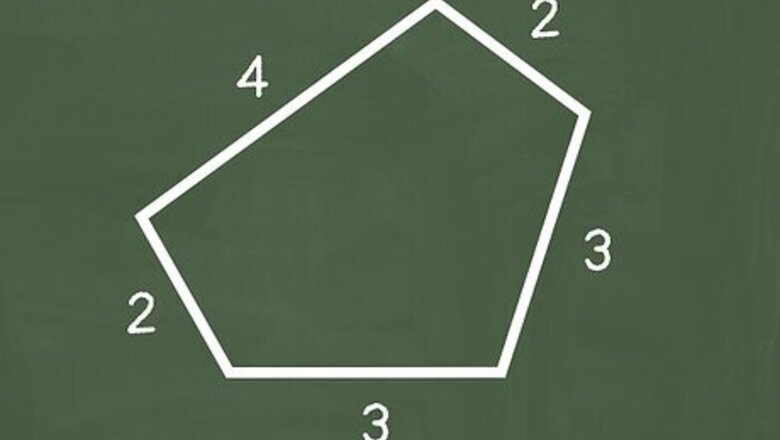
views
Finding the Perimeter of Most Shapes
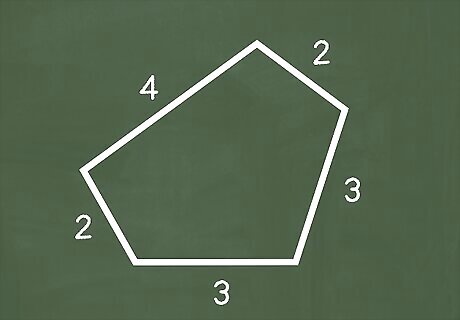
Determine the length of each side. Since perimeter is just a measure of the outline of a two-dimensional figure, you don't usually need a specific formula to find perimeter (though there are equations for specific shapes to make it easier). However, you do need to know the length of all the sides of the shape. For example, a pentagon has five sides, and you need to know the length of each one to determine perimeter. Even with an irregular polygon that has 20 sides, you can still find the perimeter as long as you know the length of each side.
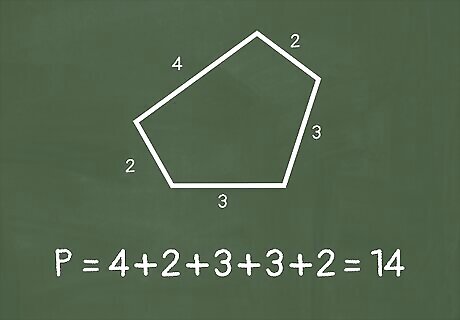
Add the length of all the sides together. To find the perimeter of non-circular objects, find the sum of all the side lengths to determine the distance around the shape. Say the irregular pentagon has the following lengths: A = 4, B =2, C = 3, D = 3, and E = 2 Add 4 + 2 + 3 + 3 + 2 = 14, where P (perimeter) = 14
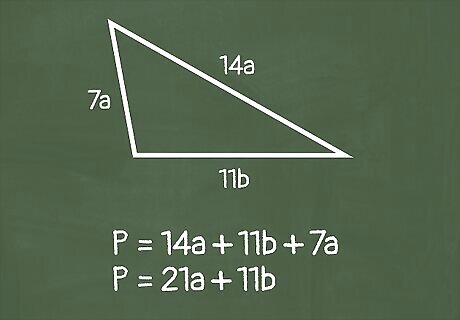
Deal with variables. You can still find perimeter when you are working with variables. For example, say you have a triangle with the side lengths 14a, 11b, and 7a: Find the sum of all the sides: P = 14a + 11b + 7a Combine the like terms: P = (14a + 7a) + 11b P = 21a + 11b
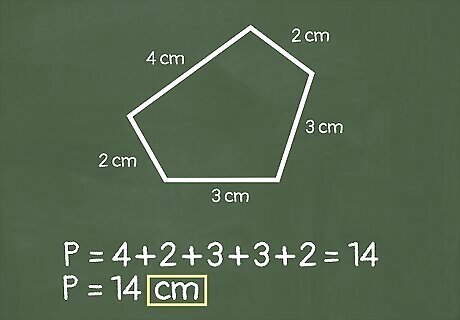
Pay attention to units of measurement. In a real world application, finding the perimeter of an object won't do you much good if you don't know what unit of measurement you're working with (such as feet, miles, or meters). With the pentagon, if each side was measured in centimeters, then you know that P = 14 cm.
Learning Perimeter Formulas
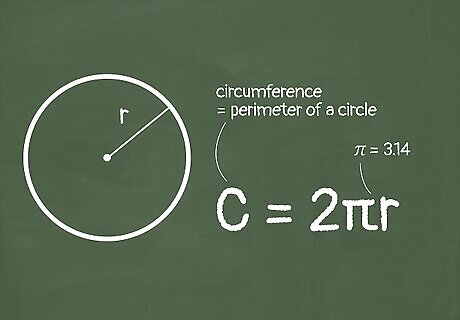
Find the perimeter of a circle. Some regular shapes have formulas that make it faster for you to find the figure's perimeter. But there are other shapes, like circles, that require a formula to find perimeter. The perimeter of a circle is called the circumference. To find the circumference of a circle, use the equation C (circumference) = 2πr. To start, find the radius of the circle, which is the length of a line segment running from the center of the circle to the perimeter. For simpler equations, use the truncated version π = 3.14 For a circle with a radius of 4cm: C = 2 x 3.14 x 4 = 25.12cm
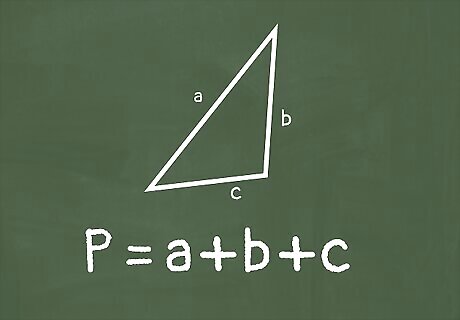
Find the perimeter of a triangle. Use the equation P = a + b + c for a triangle. For instance, if a triangle has the dimensions a = 20cm, b = 11cm, and c = 9cm, then P = 20 + 11 + 9 = 40cm.
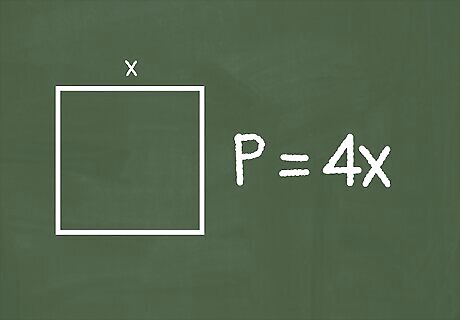
Find the perimeter of a square. Because a square has four sides of the same length, you can use the simple equation P = 4x, where x equals the length of one side. On a square where x = 3cm, then P = 4 x 3 = 12cm
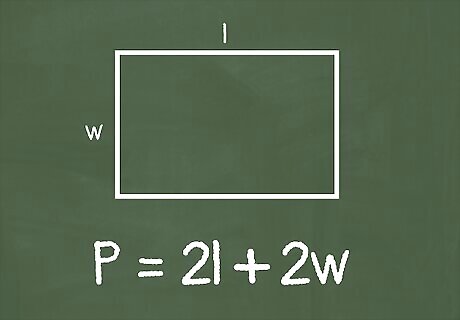
Find the perimeter of a rectangle. Since the lengthwise sides are the same and the widthwise sides are the same on a rectangle, you can use the equation P = 2l + 2w, where l is the length of one side and w is the width of one side. For a rectangle where l = 8cm and w = 5cm: P = (2 x 8) + (2 x 5) P = 16 + 10 P = 26cm The equation P = 2(l + h) will also give you the same result: 2(8 + 5) = 2(13) = 26cm
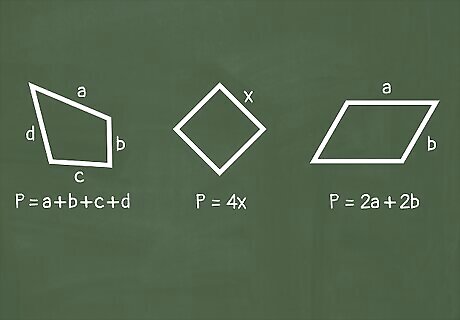
Find the perimeter of other quadrilaterals. A quadrilateral refers to any two-dimensional shape with four closed, straight sides. This includes rectangles, squares, trapezoids, parallelograms, kites, and rhombuses. There are three equations you can use for a quadrilateral, depending on the sides: For a quadrilateral with no equal sides, like an irregular trapezoid, use the equation P = a + b + c + d For a quadrilateral with four equal sides, use the same equation as a square: P = 4x. For quadrilaterals where the lengthwise sides are the same and the widthwise sides are the same (like a rectangle), use the equations P = 2a + 2b or P = 2(a + b)




















Comments
0 comment